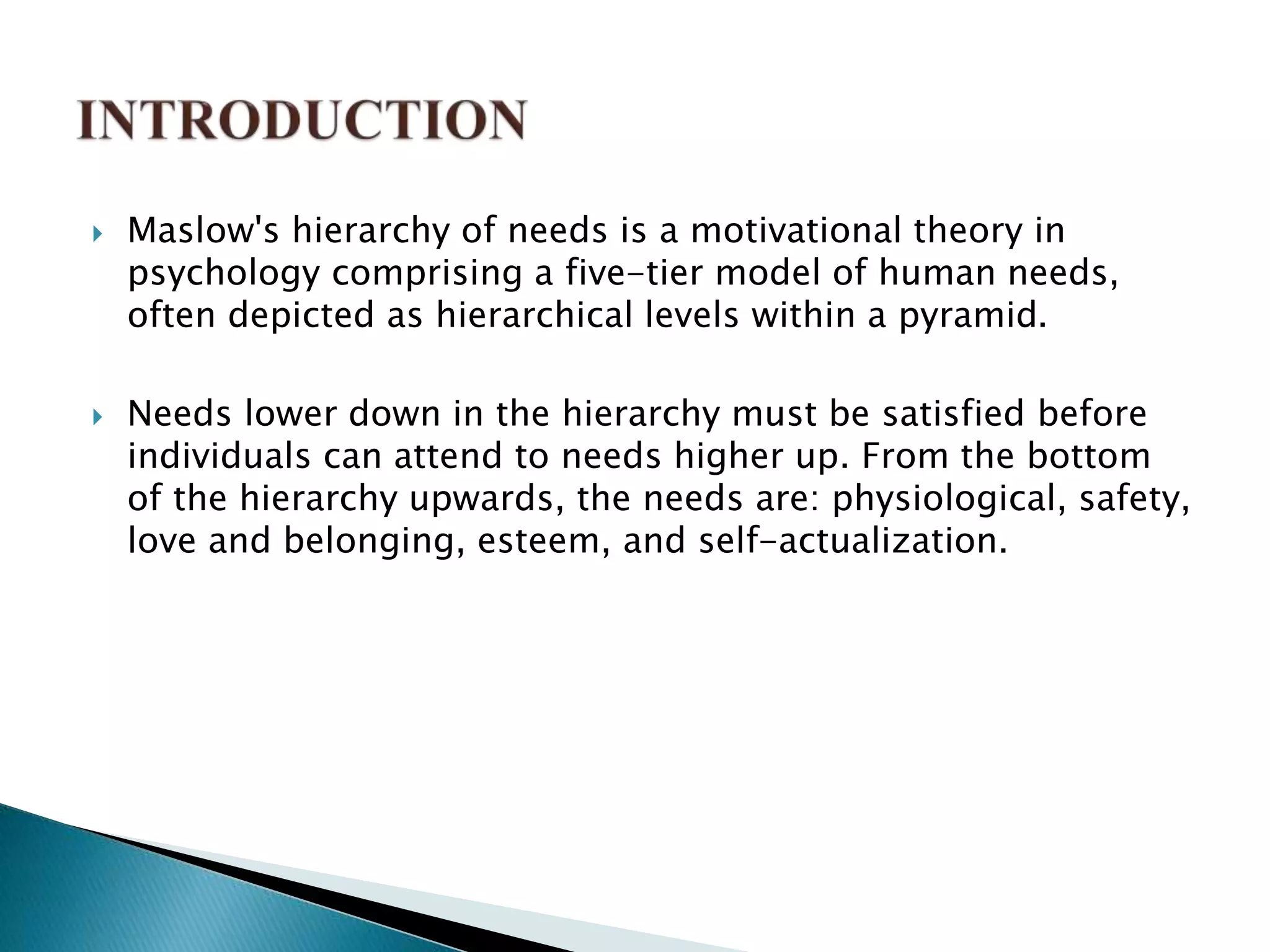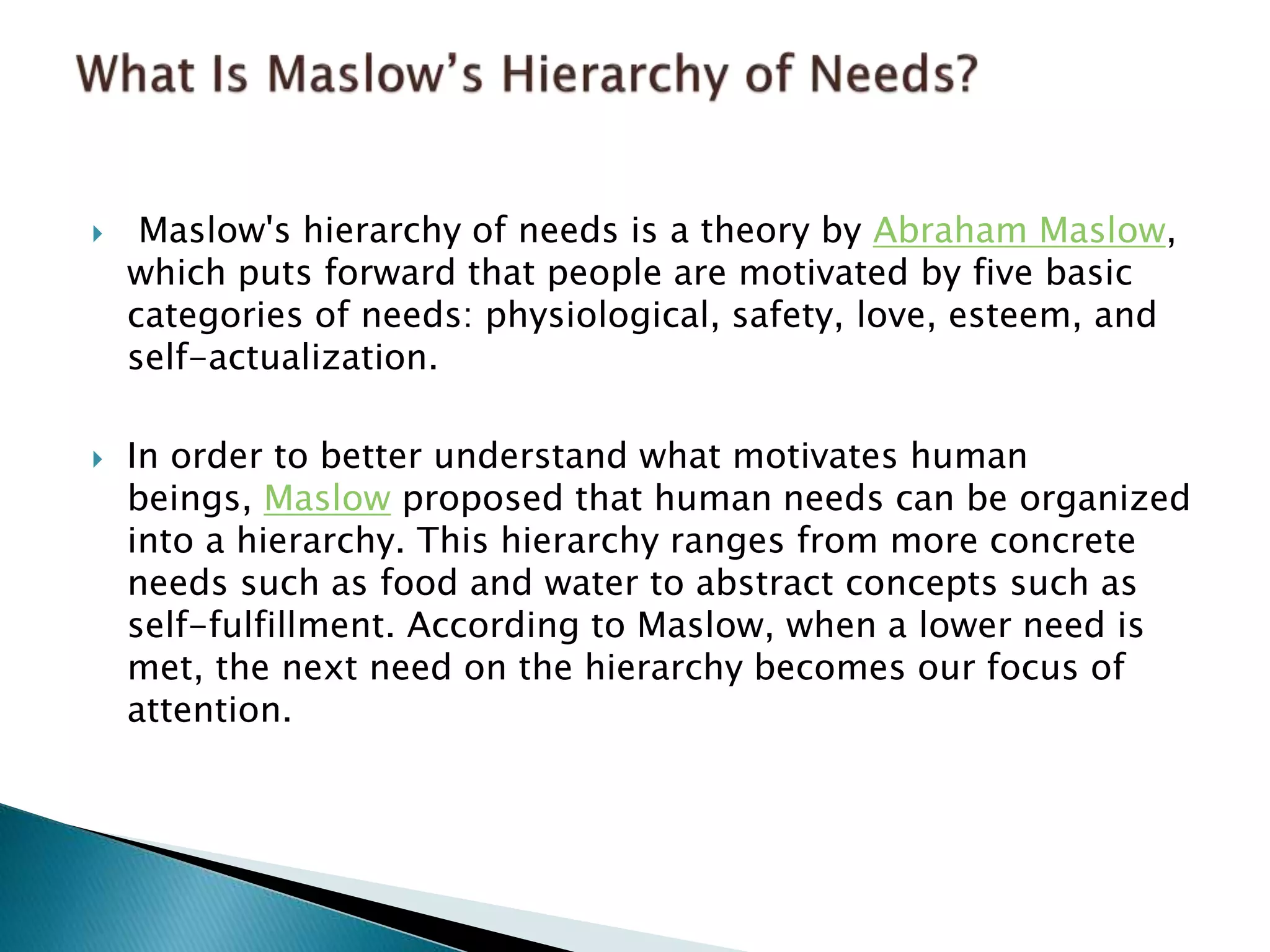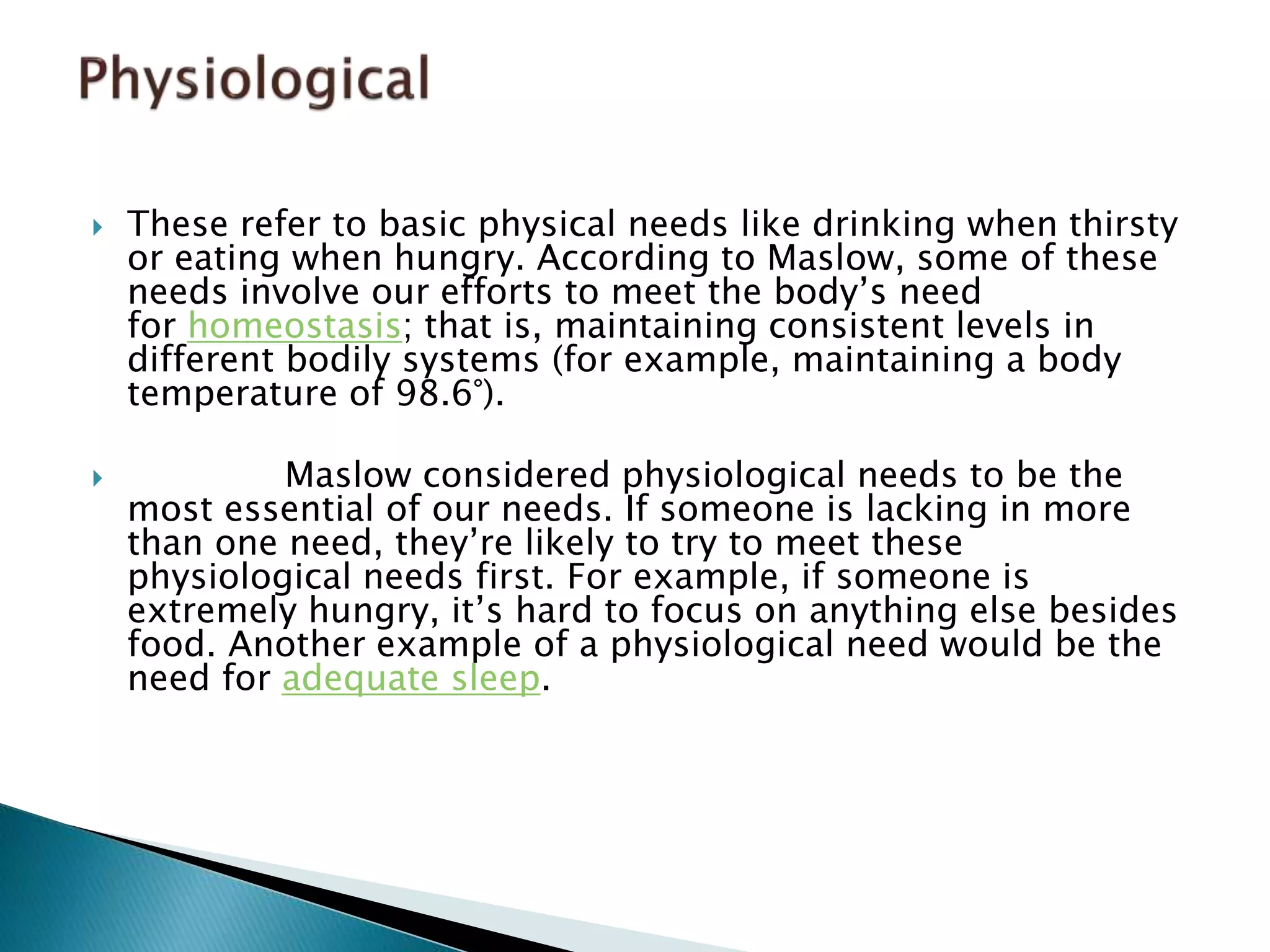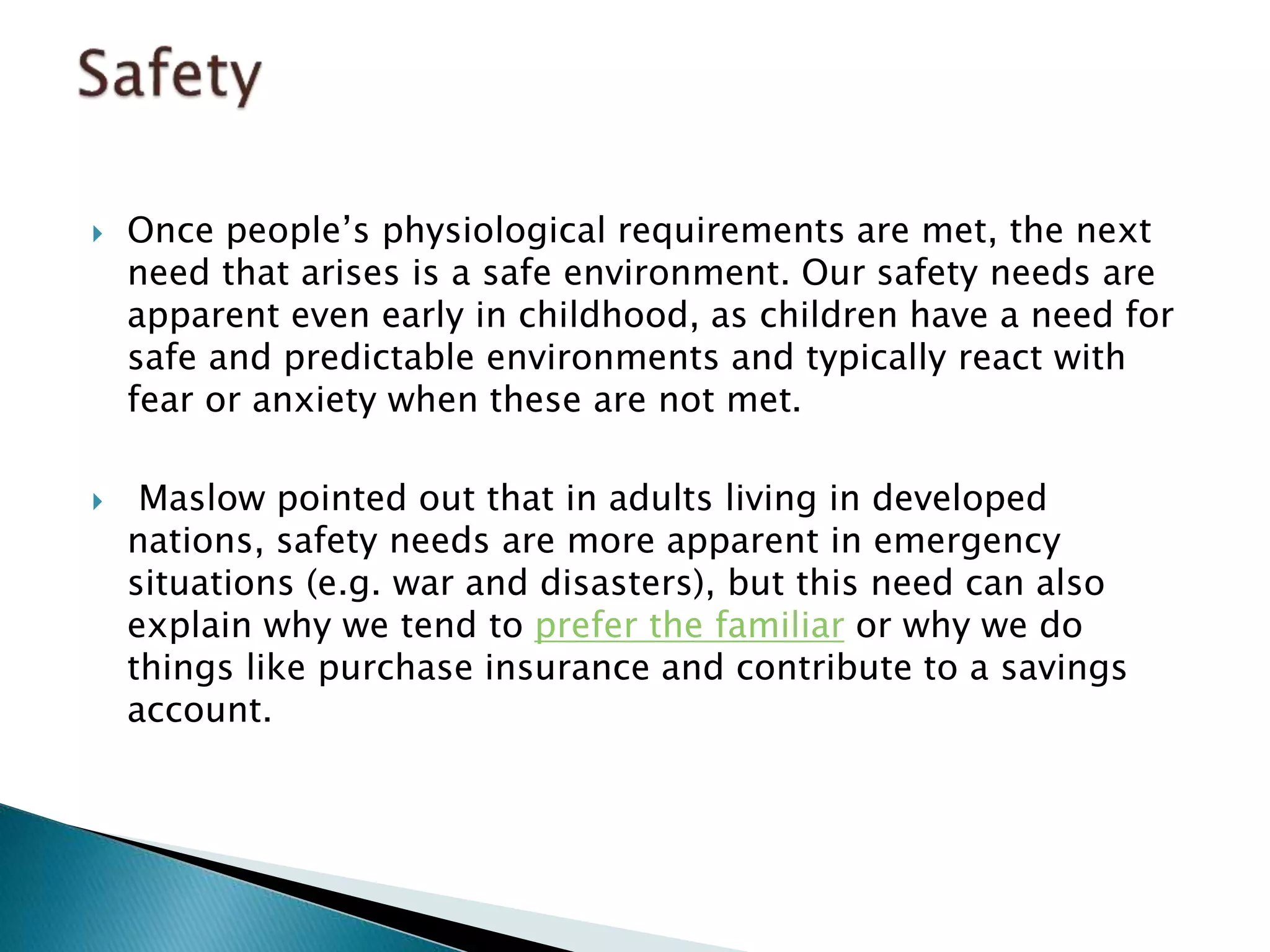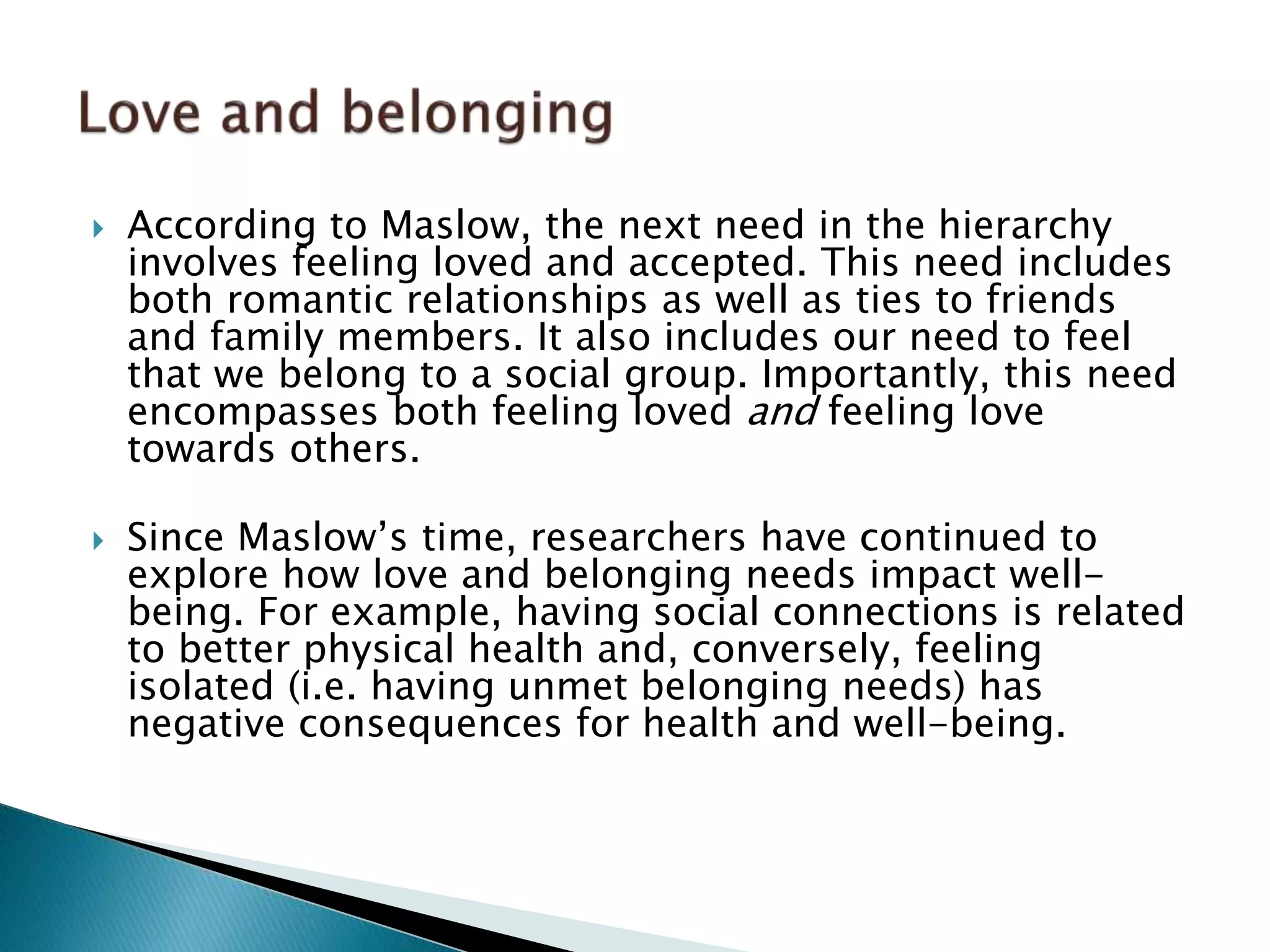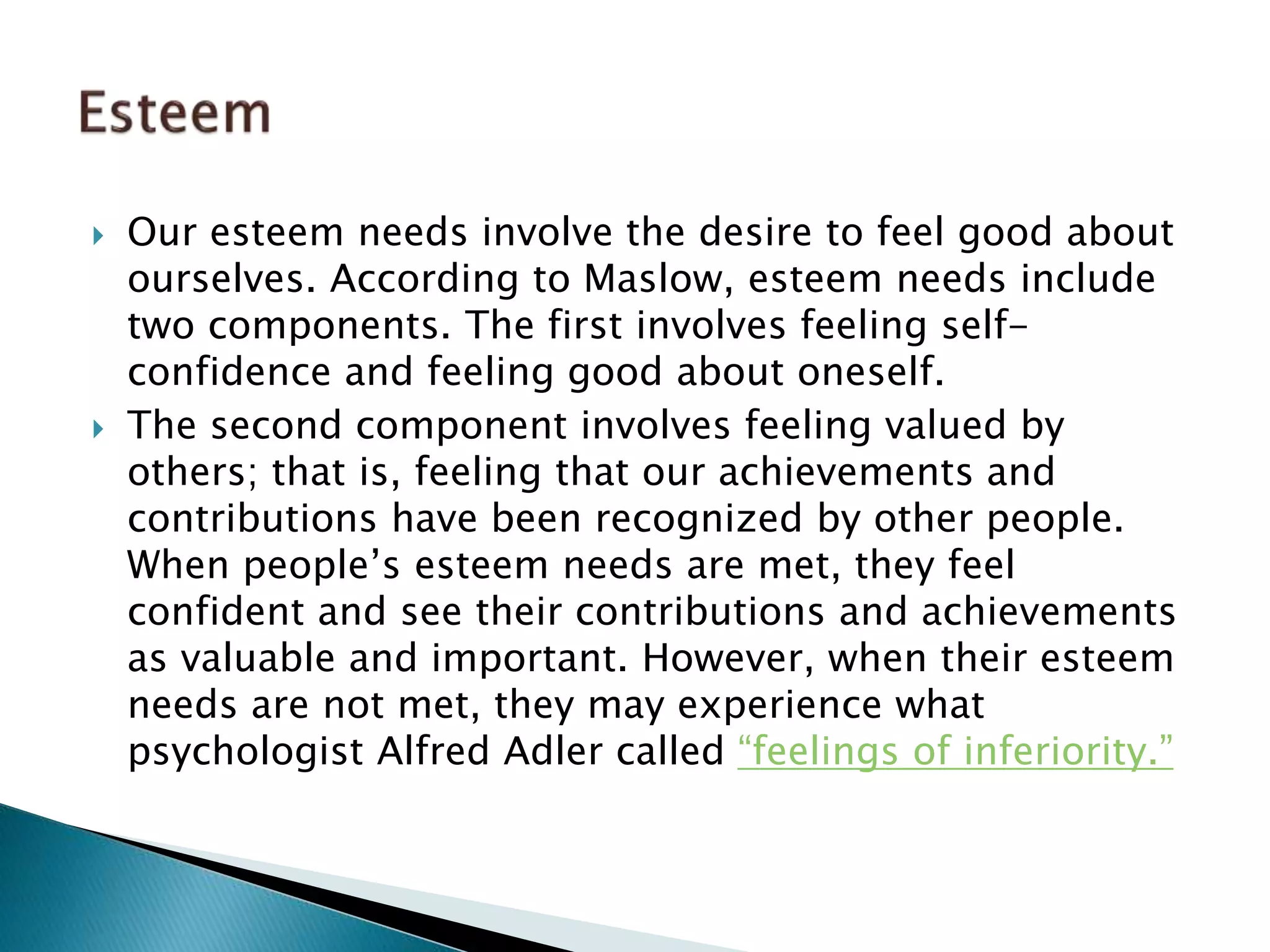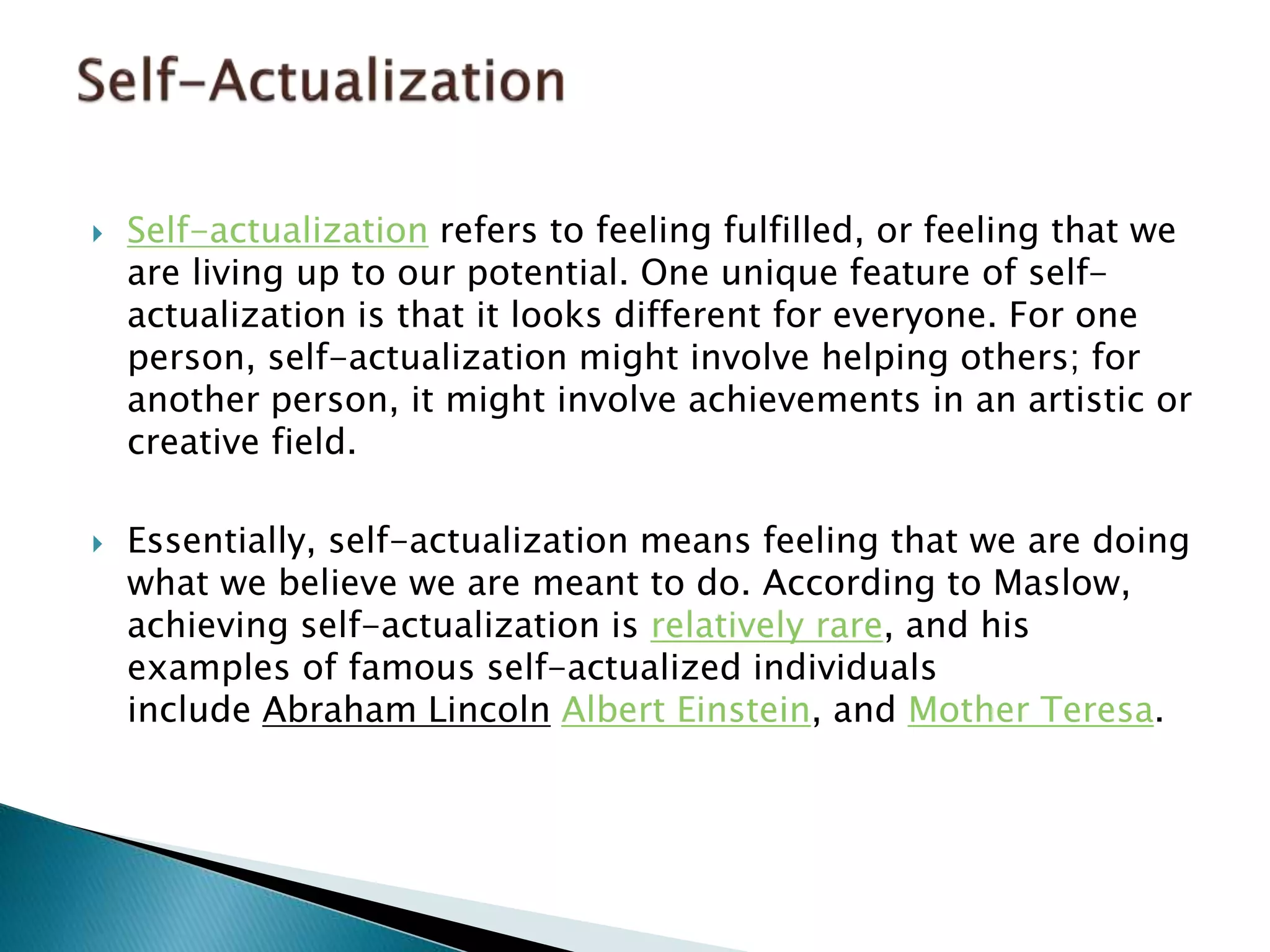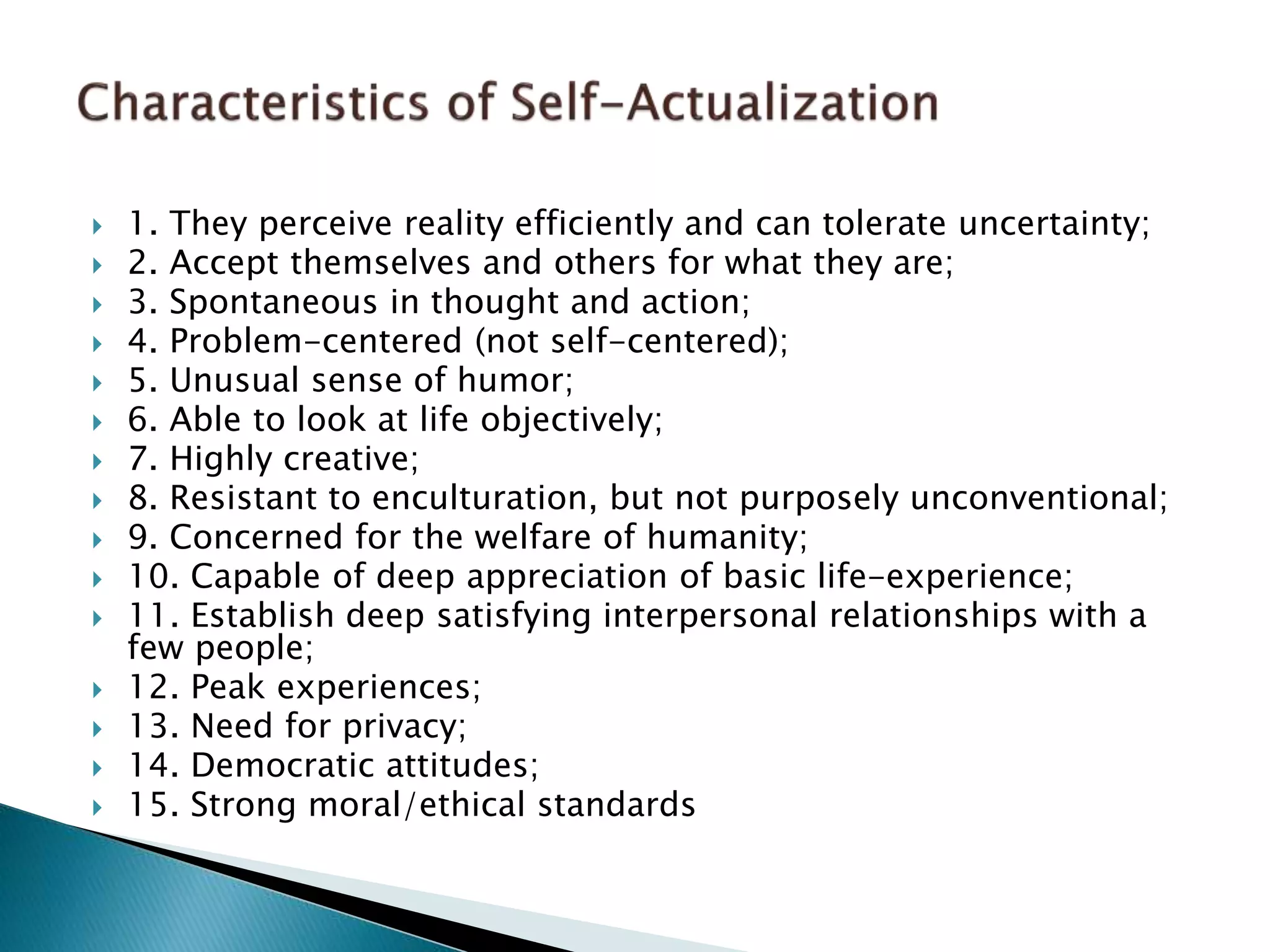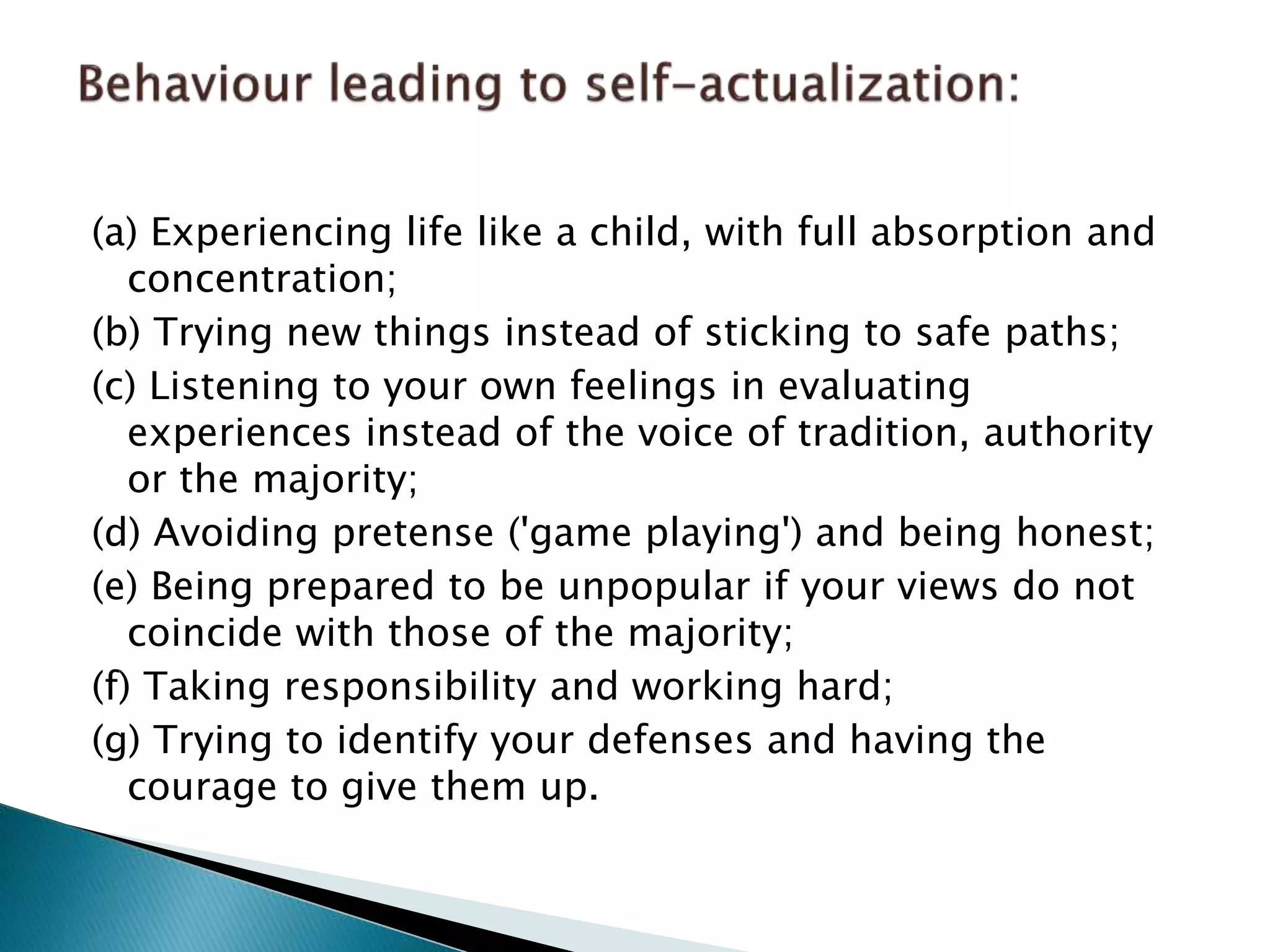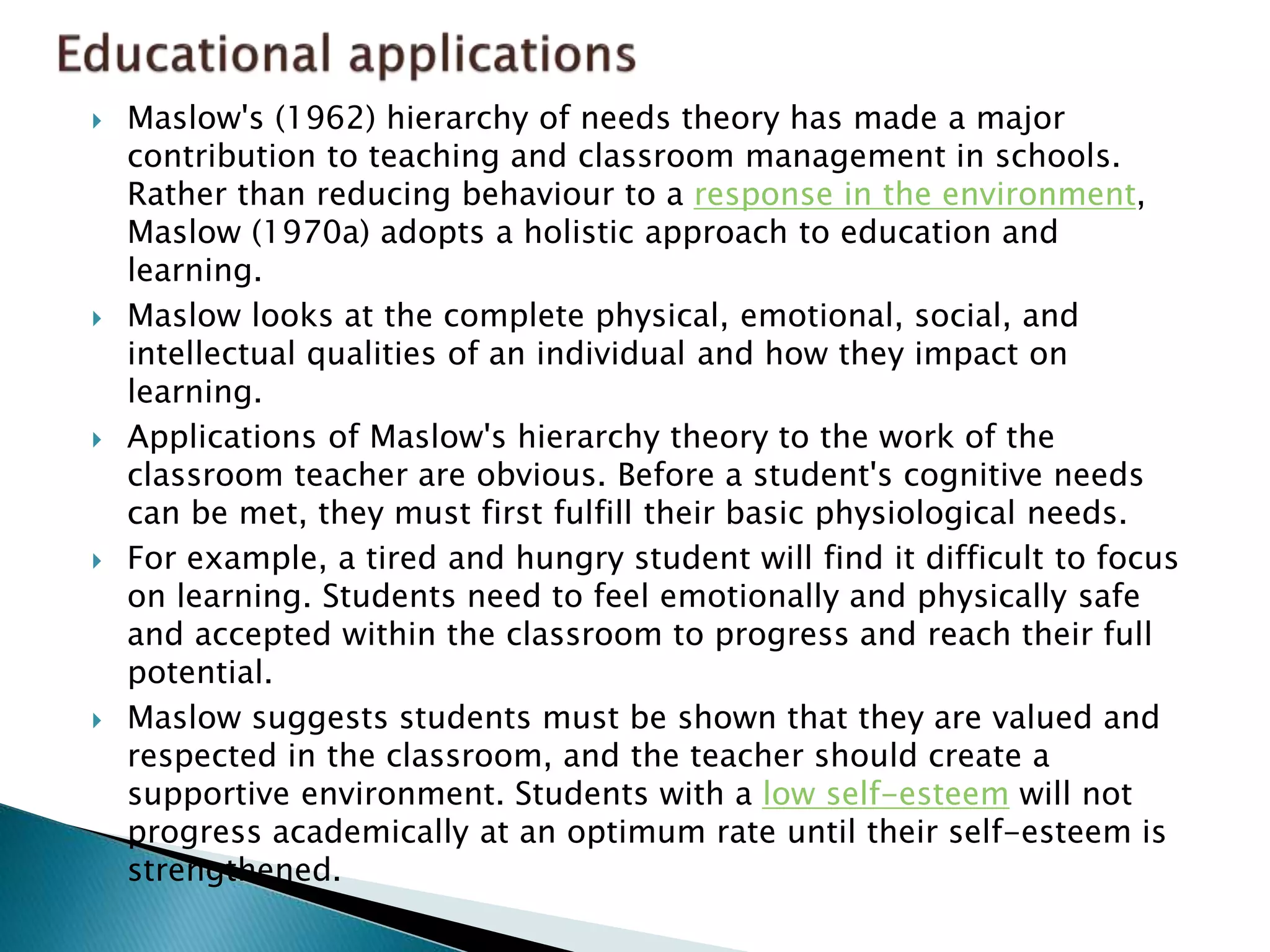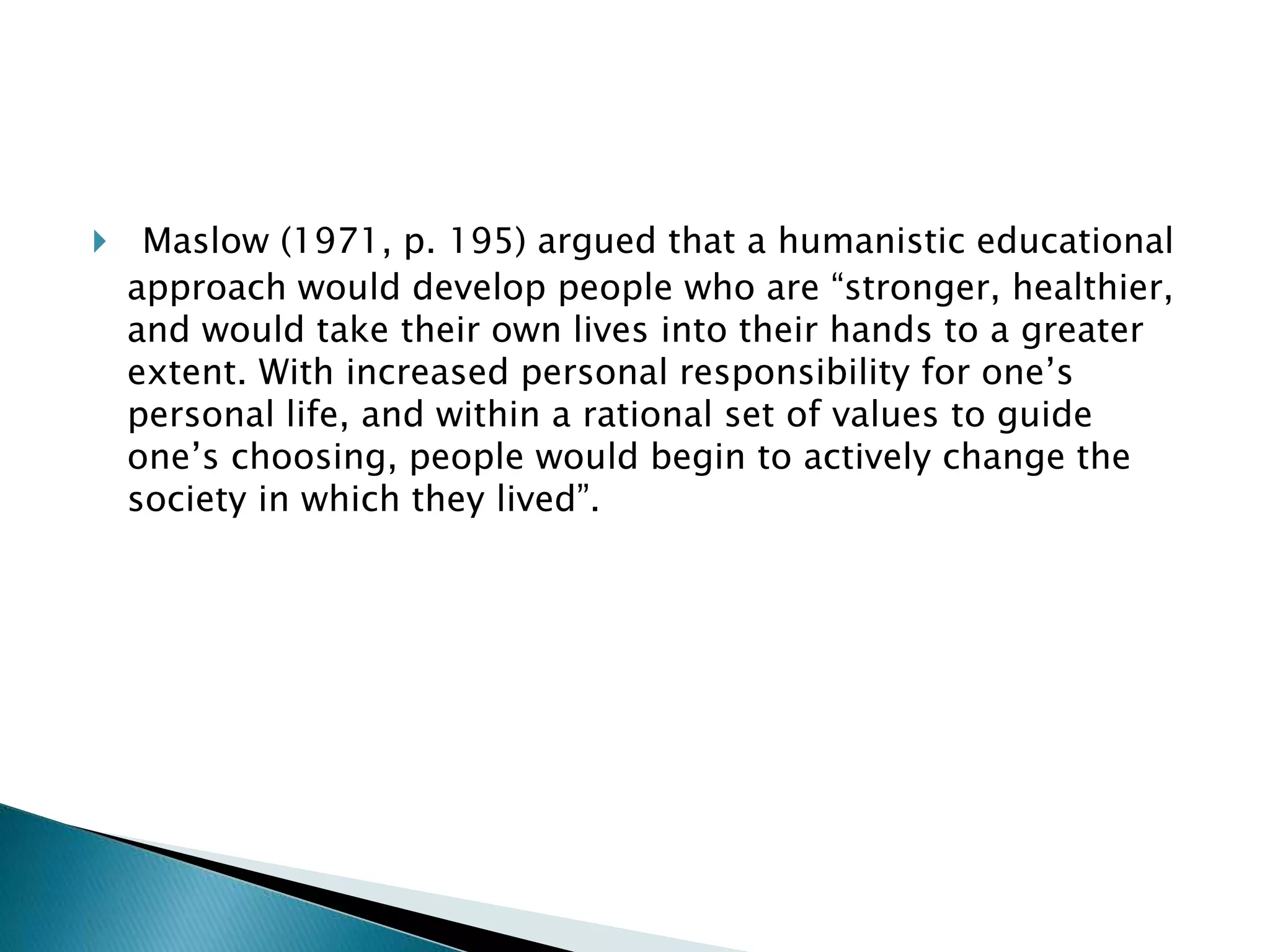Maslow's hierarchy of needs is a theory that human motivation is based on five basic needs arranged in a hierarchy: physiological needs, safety needs, love and belonging, esteem, and self-actualization. The theory states that lower level needs must be satisfied before higher level needs can be addressed. Physiological needs are basic physical requirements like food, water, warmth, and rest. Safety, love and belonging involve feeling secure, connected to others, and part of a group. Esteem and self-actualization center around personal growth and fulfillment through achievement, respect, and living up to one's potential.

